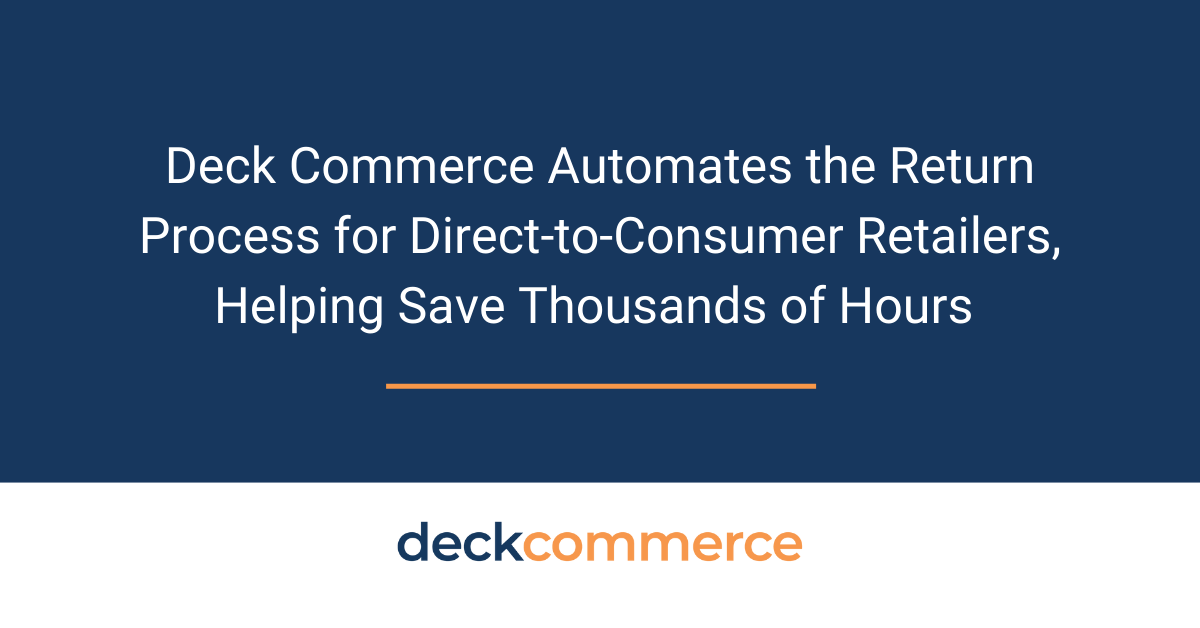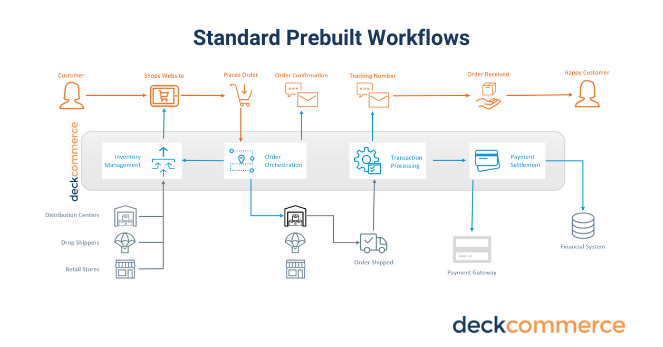
Managing orders across multiple brands presents unique challenges that require strategic solutions. From diverse product lines to brand-specific workflows and customer expectations, effective multi-brand order management is essential for operational efficiency and customer satisfaction.
In this blog post, we explore the challenges faced and explore best practices for overcoming them.
Common Challenges in Multi-Brand Order Processing & Management
The complexities of multi-brand order processing and management present many challenges that require strategic solutions.
From brand-specific workflows and inventory management to meeting customer expectations and ensuring a seamless brand experience, the journey towards efficient multi-brand operations is intricate yet crucial for business success.
Here’s a closer look at the challenges unique to multi-brand order management operations.

Brand-Specific Workflows |
|
|
Brand-Specific Order Processing Workflows |
Brands often have distinct order processing workflows, from order capture to fulfillment, which can vary in complexity and requirements. Coordinating and standardizing these workflows across multiple brands is crucial for efficiency and consistency. |
|
Integrating Brand-Specific Systems |
Each brand may use different systems for order processing, inventory management, and customer service. Integrating these diverse systems into a cohesive multi-brand order management system presents technical challenges that require seamless interoperability. |
|
Ensuring Consistent Brand Experience |
Maintaining a consistent brand experience across multiple brands is challenging, especially regarding order processing, customer communication, and delivery. Systems must ensure that customers receive a uniform experience regardless of the brand they interact with. |
Multi-Brand Inventory Management |
|
|
Product Variations |
Brands may offer products in various sizes, colors, styles, and configurations. A clothing brand may have different sizes for each garment, while an electronics brand may offer products in different colors and storage capacities. Managing these variations requires precise inventory tracking and management. |
|
Real-time Visibility |
Ensuring real-time visibility into inventory levels is crucial for timely decision-making and preventing stockouts. Inventory data should be updated instantly across all channels to provide accurate information to customers and avoid fulfillment delays. |
|
Synchronization Issues |
Synchronizing inventory data across multiple systems and platforms is challenging. Especially if each brand uses different software or databases. Inventory level discrepancies between systems can lead to fulfillment errors and customer dissatisfaction. |
|
Demand Forecasting |
Accurate demand forecasting is essential for maintaining optimal inventory levels. Each brand may have different demand patterns. Predicting future demand accurately can help prevent overstocking or stockouts. |
Customer Expectations & Experience |
|
|
Consistent Service |
Customers expect consistent service levels across all brands they interact with. This includes consistent order processing times, communication standards, and support quality. Variations in service levels between brands can lead to customer dissatisfaction. |
|
Communication |
Effective communication with customers is essential for a positive experience. This involves timely order updates, shipping notifications, and clear return/exchange policies. Inconsistencies in communication across brands can confuse customers and affect their trust in the brand. |
|
Delivery Experience |
The delivery experience, including shipping times, packaging quality, and delivery accuracy, greatly influences customer satisfaction. Brands must ensure consistent and reliable delivery experiences to meet customer expectations and avoid negative feedback. |
|
Personalization |
Personalized experiences, such as tailored product recommendations or exclusive offers based on customer preferences, are increasingly important. Brands that can personalize the shopping journey effectively can enhance customer loyalty and satisfaction. |
|
Omnichannel Support |
Customers expect seamless experiences across various online, mobile, and in-store channels. To meet these expectations, brands must provide omnichannel support for activities like order tracking, returns, and customer service inquiries. |
10 Best Practices to Improve Order Management for Multiple Brands
By focusing on efficiency, consistency, and customer-centricity, brands can overcome challenges and deliver exceptional experiences across diverse product lines.
Here’s what to prioritize and best practices to follow.
1. Centralize Order Processing
- Establish a centralized order processing system consolidating orders from multiple brands into a single platform.
- Ensure seamless integration with brand-specific systems and platforms to capture orders in real time.
2. Implement Advanced Order Management Solutions
- Utilize a robust Order Management System (OMS) that offers comprehensive centralized order capture, processing, and fulfillment features.
- Leverage OMS capabilities such as order orchestration, inventory management, and customer communication tools.
3. Customize Order Workflows
- Tailor order processing workflows to meet the unique requirements of each brand while ensuring overall consistency and efficiency within the centralized system.
- Define and configure distinct steps for order validation, payment processing, inventory allocation, and shipping fulfillment based on each brand's specific needs and processes integrated into the OMS.
4. Automate Order Routing
- Implement automated order routing rules based on predefined criteria such as product type, customer location, and inventory availability.
- Utilize intelligent routing algorithms to optimize order fulfillment processes across multiple brands and fulfillment centers.
5. Maintain Real-Time Order Visibility
- Ensure real-time visibility into order status, tracking information, and inventory levels across all brands and channels.
- Order management systems provide dashboards and reporting tools to monitor order progress, identify bottlenecks, and proactively address issues.
6. Configure Order Consolidation & Batch Processing
- Implement order consolidation strategies to optimize shipping costs and reduce order fulfillment times.
- Utilize batch processing capabilities within the OMS to streamline bulk order processing and improve operational throughput.
7. Prioritize Scalability & Flexibility in Your Tech Stack
- Embrace composable commerce principles to move away from monolithic systems, enabling flexibility, agility, and faster innovation in your tech stack.
- Choose a scalable, centralized order processing system that can handle growth, seasonal fluctuations, and changing business needs seamlessly.
- Leverage cloud-based Order Management Systems (OMS) for enhanced scalability, flexibility, and accessibility, empowering efficient order management from anywhere, anytime.
8. Unify Customer Experiences Across Every Brand
- Integrate diverse brand-specific systems into a centralized OMS for a consistent brand experience across all channels.
- Implement robust APIs and data integration protocols to enable seamless data exchange and maintain operational efficiency.
9. Centralize Inventory Visibility
- Ensure comprehensive visibility into inventory across all brands within a centralized system to facilitate efficient allocation and management.
- Enable access to real-time inventory data for all products from various brands, allowing for accurate stock levels, timely replenishment, and effective fulfillment strategies.
10. Iterate, Optimize, & Improve
- Continuously evaluate and optimize centralized order processing workflows based on performance metrics, customer feedback, and industry best practices.
- Leverage data analytics and insights to identify optimization opportunities, enhance efficiency, and drive continuous improvement initiatives.
That sounds like a lot, right? Fortunately, there’s a single technology addition with built-in best practices that eliminates the majority of the burden.
In the next sections, we explore how Deck Commerce's OMS meets the challenges of multi-brand management head-on.
How Order Management Software Empowers Multi-Brand Management Success
Managing multiple brands under one umbrella is daunting. Each brand presents its own unique challenges, from varied product lines and brand-specific workflows to distinct customer expectations. That’s why order management systems have quickly become the unsung heroes of complex eCommerce operations.
An OMS serves as the hub for multi-brand operations, simplifying order processing, inventory management, and customer service.
Here’s how:
Real-Time Inventory & Order Visibility

Real-time inventory tracking and order visibility capabilities are indispensable for multi-brand businesses, particularly those with diverse and complex product offerings.
By providing accurate, real-time data, businesses can manage their operations more effectively and meet customer demand without stockouts or overstocking.
Comprehensive Inventory Tracking
Gain a centralized view of inventory across all your brands and sales channels. This real-time tracking includes detailed SKU management, which is essential for products with multiple variations, ensuring that every size, color, and style is accurately accounted for and monitored.
Prevent Stockouts & Overstocking
With up-to-date inventory data, Deck Commerce helps prevent stockouts by alerting you when stock levels are low and facilitating timely replenishment orders. Conversely, it prevents overstocking by providing clear visibility into inventory levels, helping you make informed decisions on order quantities and storage needs.
Order Visibility Across Brands
The platform provides a unified dashboard where you can track the status of every order across all your brands, from initial placement to final delivery. This comprehensive visibility ensures that you can monitor order progress in real-time, identify any potential issues early, and take corrective action promptly.
SKU-Level Management
Managing inventory at the SKU level is crucial for brands with extensive product lines, such as those in the footwear industry. The ability to track each product variant in real time helps in maintaining accurate stock levels, planning for demand variations, and optimizing inventory distribution across channels and locations.
Data Accuracy Improves Operational Efficiency
The real-time data ensures accuracy in order management and inventory control, improving operational efficiency. Accurate, up-to-date information reduces the risks of fulfillment errors, enhances customer satisfaction, and supports better inventory planning and analysis.
Centralizes Order Processes

Deck Commerce can centralize order processing from multiple brands in a unified platform. This centralization is crucial for businesses juggling various product lines and customer bases.
Here’s how it transforms multi-brand order management processes.
Unified Order Processing Platform
Deck Commerce consolidates orders from all your brands into one system. This means you can view, manage, and process orders from different brands in a single dashboard. Ultimately enhancing visibility and control over your entire operation.
Robust Integration Capabilities
Deck Commerce has 60+ prebuilt integrations with some of the best eCommerce platforms and software providers. Whether you're using Shopify, Magento, Salesforce, or other platforms, it bridges the gap between these systems you already use.
This integration streamlines data flowing from multiple sales channels to the OMS, enabling real-time order capture and processing.
Streamlined Operations
Deck Commerce eliminates the need to toggle between different systems for each brand. This streamlining saves time and reduces the risk of human errors that can occur when manually transferring data across systems.
Real-Time Data Synchronization
Deck Commerce gives you real-time insights into your order status across all brands. This immediate access to data is vital for optimizing inventory levels, and ensuring timely fulfillment.
Automated & Customized Workflows

Deck Commerce revolutionizes multi-brand order management by automating and standardizing workflows, ensuring that every brand under your umbrella operates consistently and accurately.
Automated Order Routing
Deck Commerce intelligently automates the routing of orders based on predefined criteria such as inventory location, shipping preferences, and customer priority. This automation ensures that orders are processed and fulfilled efficiently, reducing manual intervention and the potential for errors.
Customized Workflows Across Brands
While maintaining a standardized framework, the OMS allows for customizable workflows tailored to each brand's unique requirements. This flexibility ensures that specific business rules and processes can be implemented for individual brands within the centralized system, optimizing operational efficiency and enhancing brand differentiation.
Here’s a quote from a real Deck Commerce customer.
“Even though we have a single system, we can provide a customized configuration of settings based on the brand’s strategies and goals…We don’t need to have multiple systems or force all the brands to do things one way. That is the biggest win for us.” - Mariana Turchak, Sr. Manager, Order Management Solutions. Read the full case study here.
Automated Validation Checks
The system conducts automated validation checks at various stages of the order process. These checks ensure the accuracy of order details, inventory availability, and customer information, reducing the likelihood of fulfillment issues and enhancing overall order accuracy.
Efficient Shipping Fulfillment
The platform automates the selection of shipping methods and carriers based on predefined logistics criteria, optimizing shipping costs and delivery times. This automation improves operational efficiency and enhances the customer's delivery experience.
Automated Returns Processes
Deck Commerce simplifies and automates up to 98% of returns processes across all brands, ensuring efficient handling of returns, exchanges, and refunds. This automation streamlines operations, reduces manual workload, and enhances customer satisfaction by providing a seamless and consistent return experience.
Scalability & Flexibility for Growth

Scalability and flexibility make Deck Commerce an ideal OMS for multi-brand businesses looking to capitalize on new opportunities while maintaining operational excellence.
Scalable Infrastructure
Whether you're adding new product lines, expanding into new markets, or incorporating additional brands, the platform can handle increased order volumes and complex operational demands without compromising performance.
Adaptable to Market Changes
The platform is designed to quickly adapt to market trends, consumer demands, and industry changes. This adaptability means businesses can swiftly adjust their strategies, such as modifying inventory distribution, introducing new fulfillment options, or leveraging advanced data analytics for market insights.
Customization & Configurability
With Deck Commerce, businesses can customize and configure the system to meet each brand's unique needs. From tailored workflow designs to brand-specific processing rules, the platform provides the tools necessary to create an optimized order management environment for each brand’s specific requirements.
Multi-Brand Order Management Case Study

Newell Brands embarked on a transformative digital journey to address the complexities of managing sixty diverse brands. With multiple backend systems and various selling channels, its operations were burdened by siloed data, fragmented processes, and high costs.
They achieved unprecedented efficiency and cost savings by consolidating disparate systems and streamlining order management with Deck Commerce.
Read the full case study here.
Tackle Multi-Brand Order Management Complexities with Deck Commerce
Struggling with order management efficiency across your brands? Discover how Deck Commerce can streamline multi-brand operations and transform challenges into opportunities.
Schedule a demo today to see our OMS in action and learn how we can tailor our solution to fit your unique business needs. Don't let complexity hold you back—let Deck Commerce propel your brand forward.

.png?width=1200&height=627&name=Shoptalk%20Ads%20(5).png)
